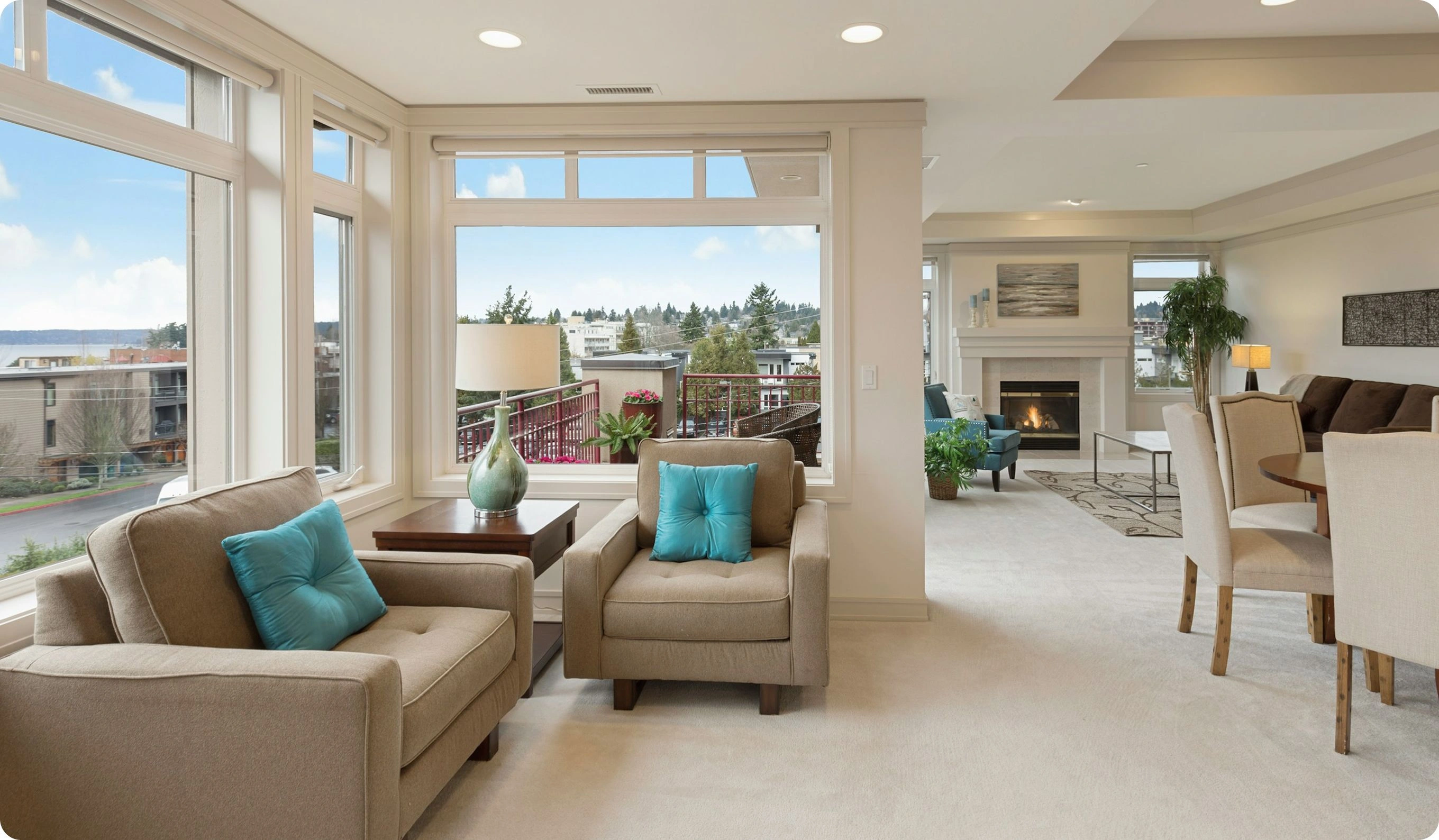Best offers
in Grenada
Benefits of investment in
Grenada real estate
Second citizenship through real estate
Grenada’s Citizenship by Investment program includes approved properties — combining lifestyle and global mobility.
Caribbean villas with premium rental value
Ocean-view homes are sought after by high-end travelers and deliver strong seasonal yields.
Investor-friendly environment with legal clarity
Ownership rights are protected, and property transactions are regulated to international standards.
Second citizenship through real estate
Grenada’s Citizenship by Investment program includes approved properties — combining lifestyle and global mobility.
Caribbean villas with premium rental value
Ocean-view homes are sought after by high-end travelers and deliver strong seasonal yields.
Investor-friendly environment with legal clarity
Ownership rights are protected, and property transactions are regulated to international standards.

Useful articles
and recommendations from experts
Spice Estates & Coastal Retreats in Grenada
Grand Anse Beachfront Villas & Resort Plots
The iconic Grand Anse Beach—renowned for its two-mile stretch of white sand—offers prime land parcels of 0.2–2 acres for luxury villas and small boutique resorts. Investors may acquire freehold titles through the Land Registry, with conveyancing managed by local attorneys. Parcels within designated tourism zones permit development of up to four storeys, subject to planning approval by the Physical Planning Unit. Duty exemptions apply to construction materials for approved tourism projects, under the Tourism Master Plan. High season nightly rates of 300–500 USD support yields of 6–8 percent, while fractional-ownership models reduce entry barriers for international buyers.
Hillside Spice Plantations & Agroforestry Estates
Hillside estates in Saint Patrick and Saint Andrew parishes encompass traditional nutmeg, cocoa and mace orchards on plots of 5–50 hectares. Investors can acquire land freehold or via long-term leasehold agreements, with annual rents linked to agricultural output. The Spice Industry Authority offers grants covering up to 30 percent of replanting and irrigation infrastructure costs, revitalizing heritage spice production. Integrated agroforestry models combining fruit trees, vanilla and honey production yield diversified revenues. Processing facilities for essential oils and spice grading centers enhance value addition, with export premiums of 20–30 percent on specialty organic certifications.
Carriacou & Petite Martinique Residential Sites
The sister islands of Carriacou and Petite Martinique feature residential plots of 0.1–1 acre zoned for low-density housing and guest cottages. Freehold ownership is available under local ordinance through conveyance at the Registry Office. Investors may benefit from land consolidation schemes under the National Land Regularisation Programme, reducing title irregularities. Properties near Tyrell Bay and Mount Pleasant command purchase prices of 50–150 USD per square meter. Low tourist volumes ensure peaceful retreats, while community-based eco-lodge ventures yield occupancy of 50–70 percent with nightly rates of 100–200 USD.
Levera & Salybia Lagoonfront Eco-Concessions
The northeastern Levera and Salybia lagoons offer conservation concessions of 10–500 hectares under 25-year renewable lease agreements with the Forestry and National Parks Department. Investors can develop eco-lodges, bird-watching platforms and kayaking centres in partnership with local Kalinago communities. Concession conditions mandate minimal-impact boardwalks and solar power, with community revenue-sharing clauses. Grants from the Climate Resilience Fund cover up to 40 percent of eco-infrastructure costs. These properties attract adventure tourists and researchers, achieving occupancy rates of 60–80 percent during migratory bird season.
St. George’s Suburban Development & Mixed-Use Sites
Grenada’s capital and its suburbs—Paraclete, Tanteen and the Belmont Estate area—feature mixed-use plots of 0.5–5 hectares zoned under the Land Use Plan for residential, commercial and light industrial developments. Infrastructure upgrades, including improved road access to Maurice Bishop International Airport and water augmentation projects, drive land-value appreciation of 8–10 percent annually. Developers may tap the National Housing Corporation’s low-interest lending schemes for affordable housing components. Master-planned communities with retail, schools and health clinics achieve absorption rates above 70 percent within three years.
Riverside Agricultural Valleys & Cocoa Farms
Riverside valleys along the Dougaldston and Annandale Rivers offer fertile alluvial flats of 10–200 hectares for cocoa, banana and ylang-ylang plantations. Investors may secure freehold plots through the Registry, with incentives from the Ministry of Agriculture for certified organic farming. Grants cover up to 35 percent of greenhouse and post-harvest facility costs. Integrated chocolate-processing units and botanical-distillery operations generate value-add opportunities. Premium dark chocolate and essential oils command export prices that yield gross margins of 25–30 percent when direct-traded with European and North American buyers.
Renewable Energy Parks & Off-Grid Microgrids
Under the National Sustainable Energy Strategy, Grenada targets 30 percent renewables by 2030, opening 5–100 hectare tracts in sunbelt and windward locations for solar PV and small wind installations. Investors secure 20-year Power Purchase Agreements with Grenlec under feed-in tariffs. Grants covering up to 50 percent of equipment and connection costs are available via the Caribbean Development Bank. Off-grid microgrid projects in remote parishes blend solar, battery storage and diesel backup, achieving energy autonomy for resorts and communities. These energy sites deliver stable long-term returns indexed to electricity sales.
Sauteurs Coastal Cliffs & Wellness Retreats
The rugged northwest cliffs near Sauteurs offer small parcels of 0.5–2 acres zoned for wellness retreats, yoga centres and cliffside villas. Investors obtain freehold titles and must secure planning permission under coastal setback regulations. Development incentives include duty-free importation of wellness equipment and reduced stamp duty for health-tourism projects. Elevated decks and infinity pools deliver panoramic sea views, supporting nightly rates of 200–350 USD. Off-season wellness workshops and corporate retreats diversify occupancy patterns.
Regulatory Framework & Title Registration
Land acquisition in Grenada involves: 1 submission of a memorandum of transfer to the Registry; 2 payment of stamp duty at 5 percent of value; 3 land transfer tax at 2 percent; and 4 registration in the Land Deeds Register. Freehold ownership is unrestricted for foreign nationals. Agricultural lands over 50 hectares may require Cabinet approval. Annual property tax ranges from 0.2–0.5 percent of assessed value. A “one-stop” service at the Ministry of Finance streamlines permitting, reducing combined lead-times for development approval to six months.
Transport Corridors & Logistics Hubs
Strategic land along the main east-west corridor and near the Maurice Bishop International Airport unlocks 1–10 hectare parcels for logistics centres and cold-chain warehouses. Investors benefit from duty exemptions on refrigeration equipment and preferential lease rates under the Caribbean Aviation Safety and Security Oversight System. Planned upgrades to the deep-water port at Hillsborough Bay will further enhance freight handling capacity, increasing demand for adjacent logistics plots and industrial estates.
Risk Mitigation & Climate Resilience
Grenada’s exposure to hurricanes (June–November) and seismic events requires rigorous site assessments. Investors should commission wind-load and flood-risk modeling, and integrate hurricane-resistant design—reinforced concrete, impact-rated fenestration and elevated foundations. Shore-protection permits under the Coastal Zone Management Act mandate setbacks and mangrove restoration to reduce erosion. Title insurance provides indemnity against boundary disputes and post-handover claims. Local insurers offer business-interruption coverage tailored to tourism and agriculture sectors.
Community Partnerships & Social Impact
Under the Grenada Sustainable Tourism Policy, developers allocating 10 percent of tourism land plots for community-use—such as craft markets, cultural centres and youth training facilities—qualify for concessions on development fees and land taxes. Joint ventures with local fishermen’s cooperatives and spice farmers enhance community revenue streams. Grants from the Ministry of Social Development cover up to 30 percent of social-infrastructure costs, fostering social licence and sustainable local benefits.
market dynamics & projected appreciation
Grenada’s limited land supply—just 348 square kilometres—drives scarcity-driven appreciation of 7–9 percent annually in prime coastal and highland zones. Continued infrastructure investments—airport runway extension, coastal road realignments and port deepening—will unlock new corridors of growth. The island’s stable parliamentary democracy, English-language legal system and robust tourism sector underpin investor confidence. For those who acquire Grenadian land and deploy diversified, climate-resilient strategies, the country offers resilient, multi-income portfolios poised for competitive returns over the next decade.

